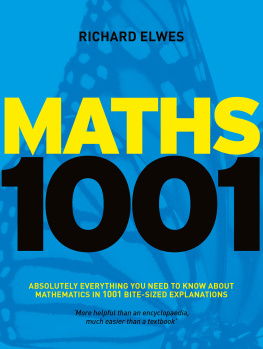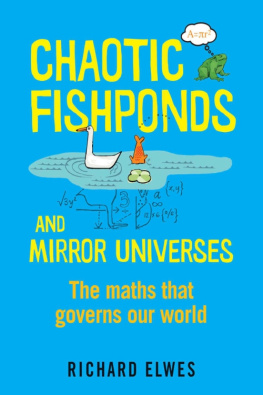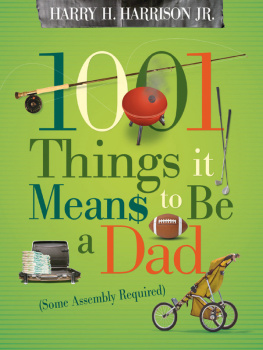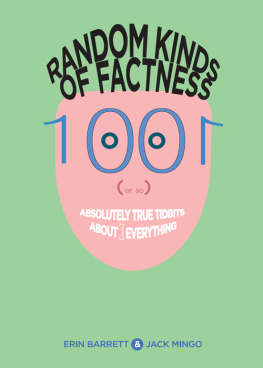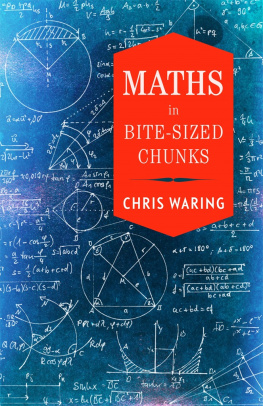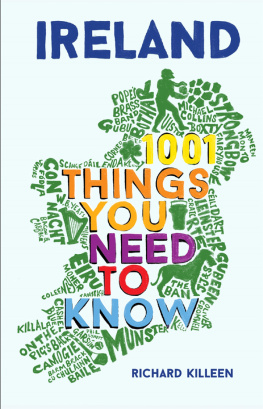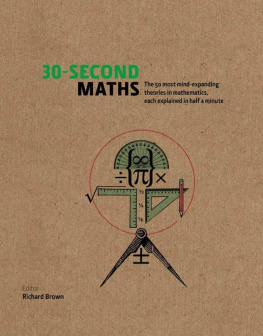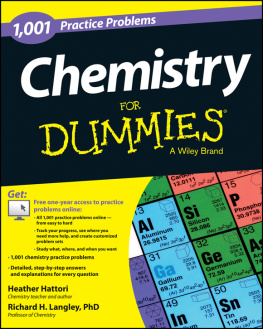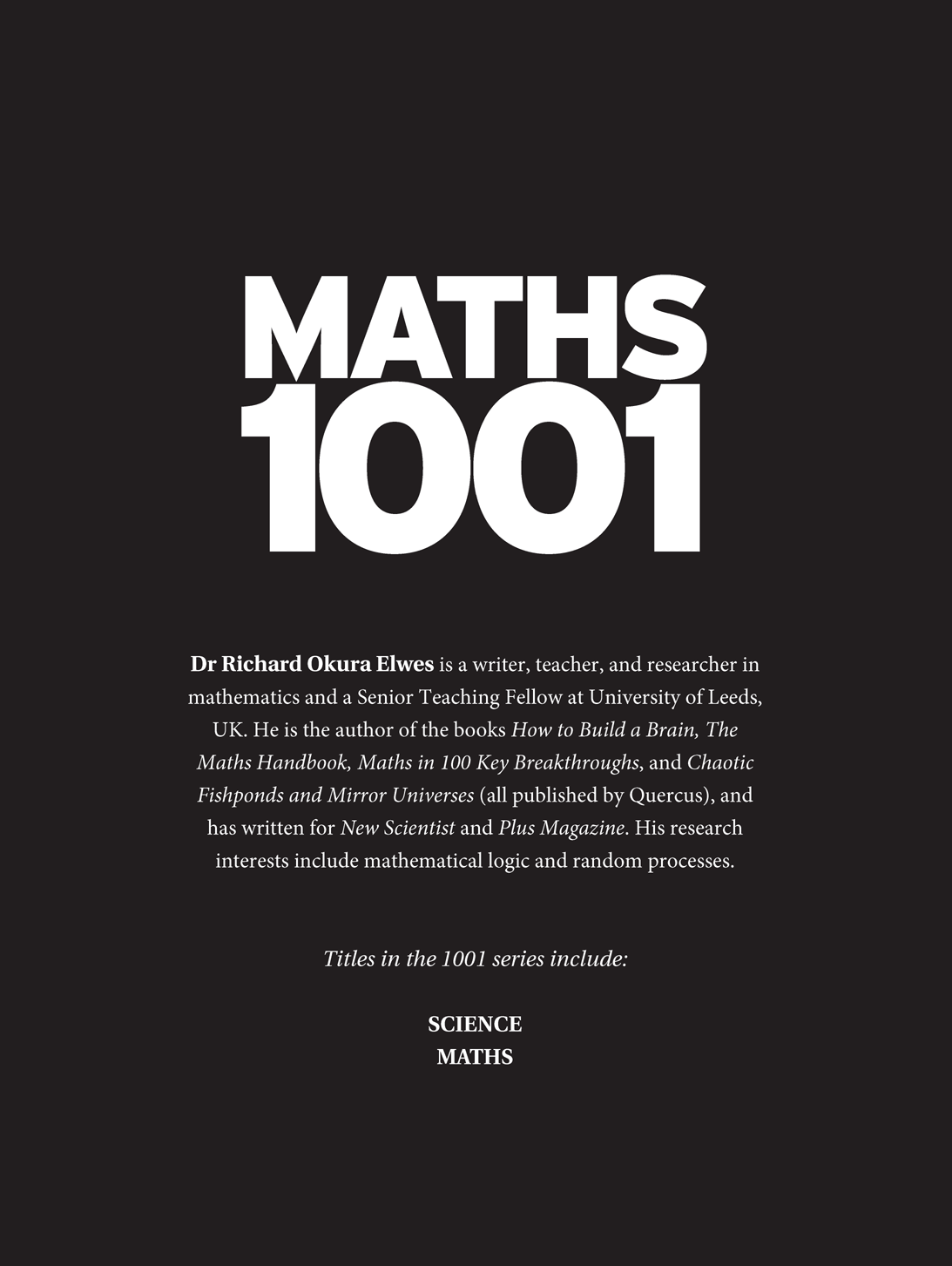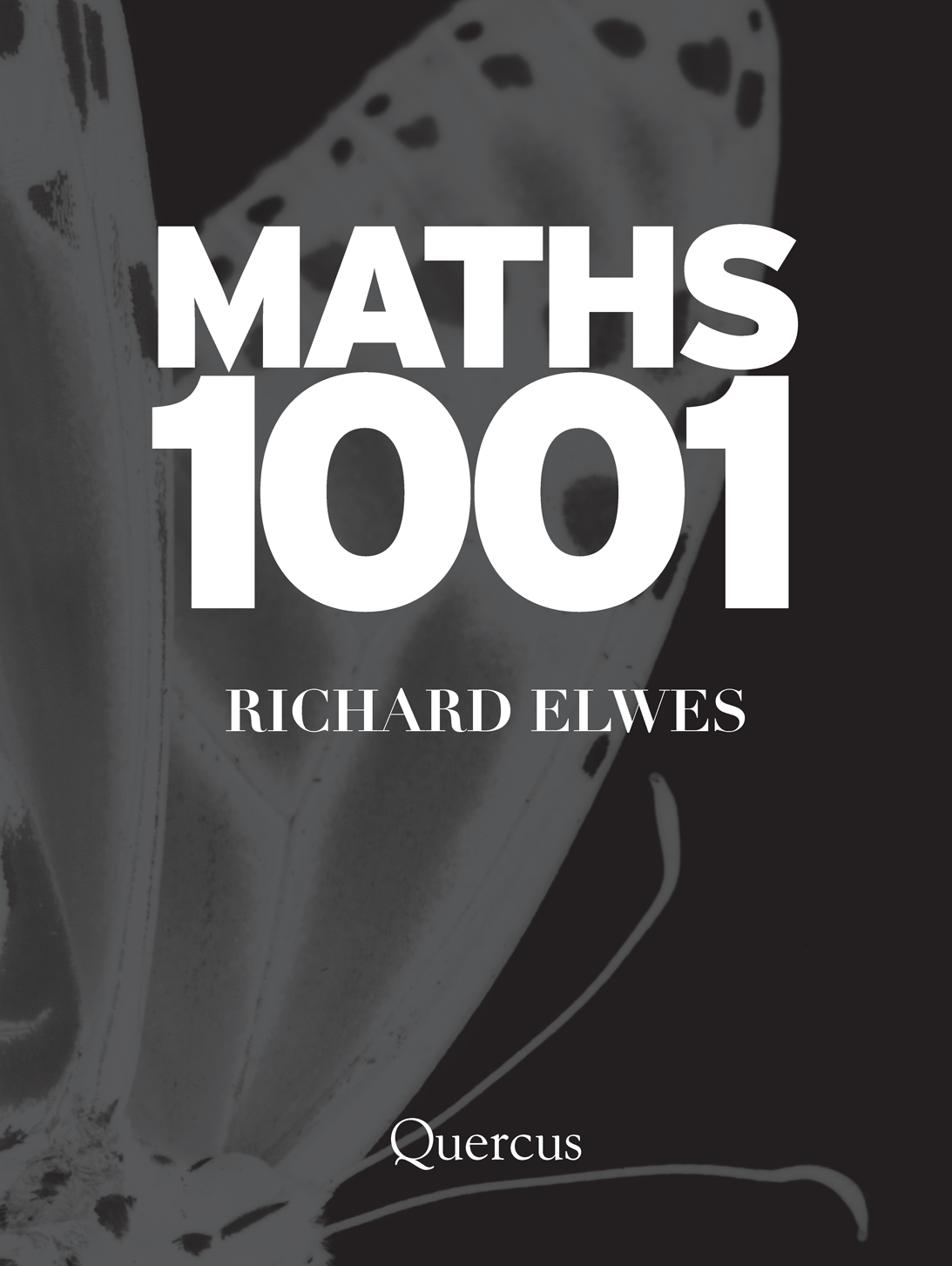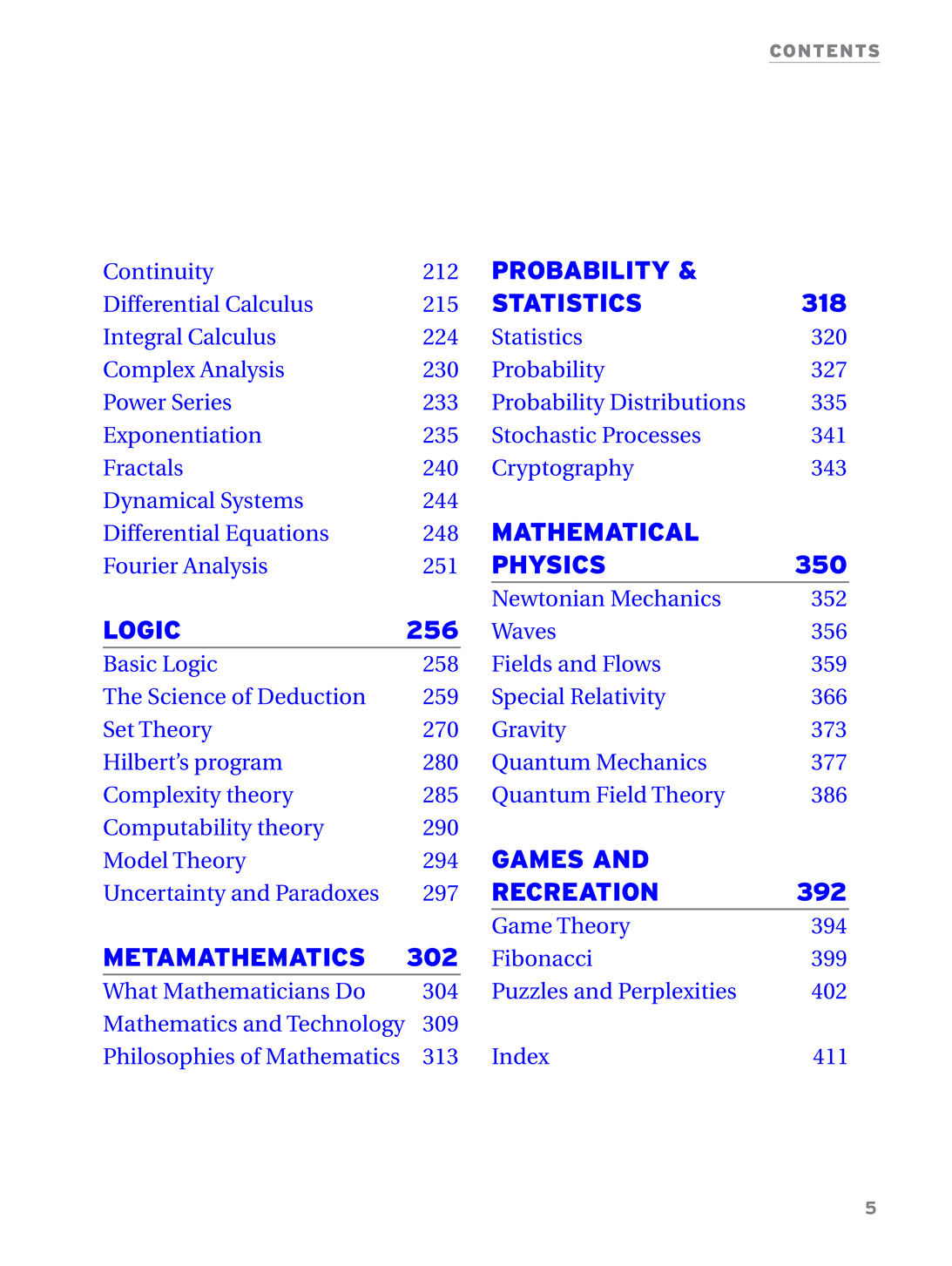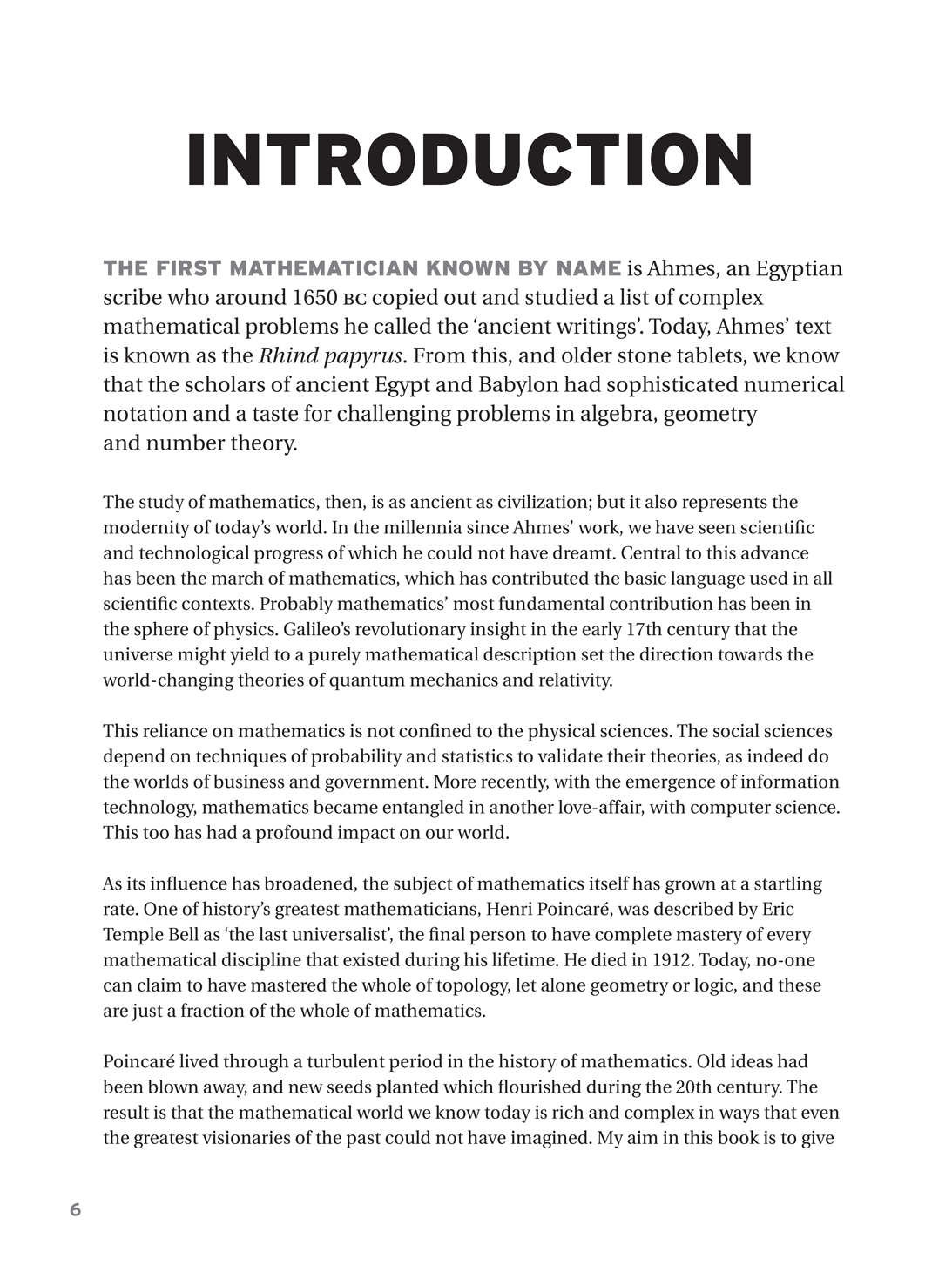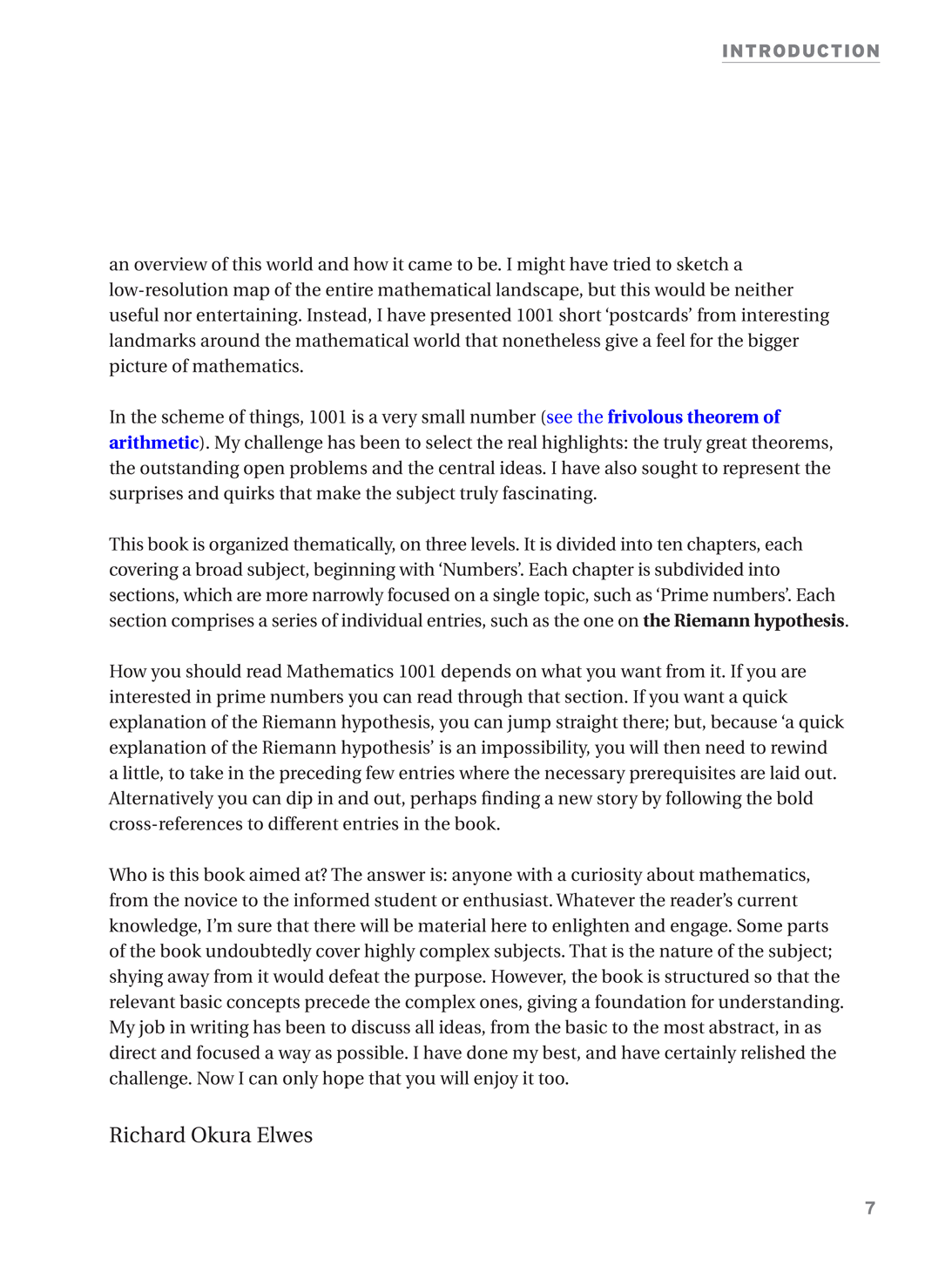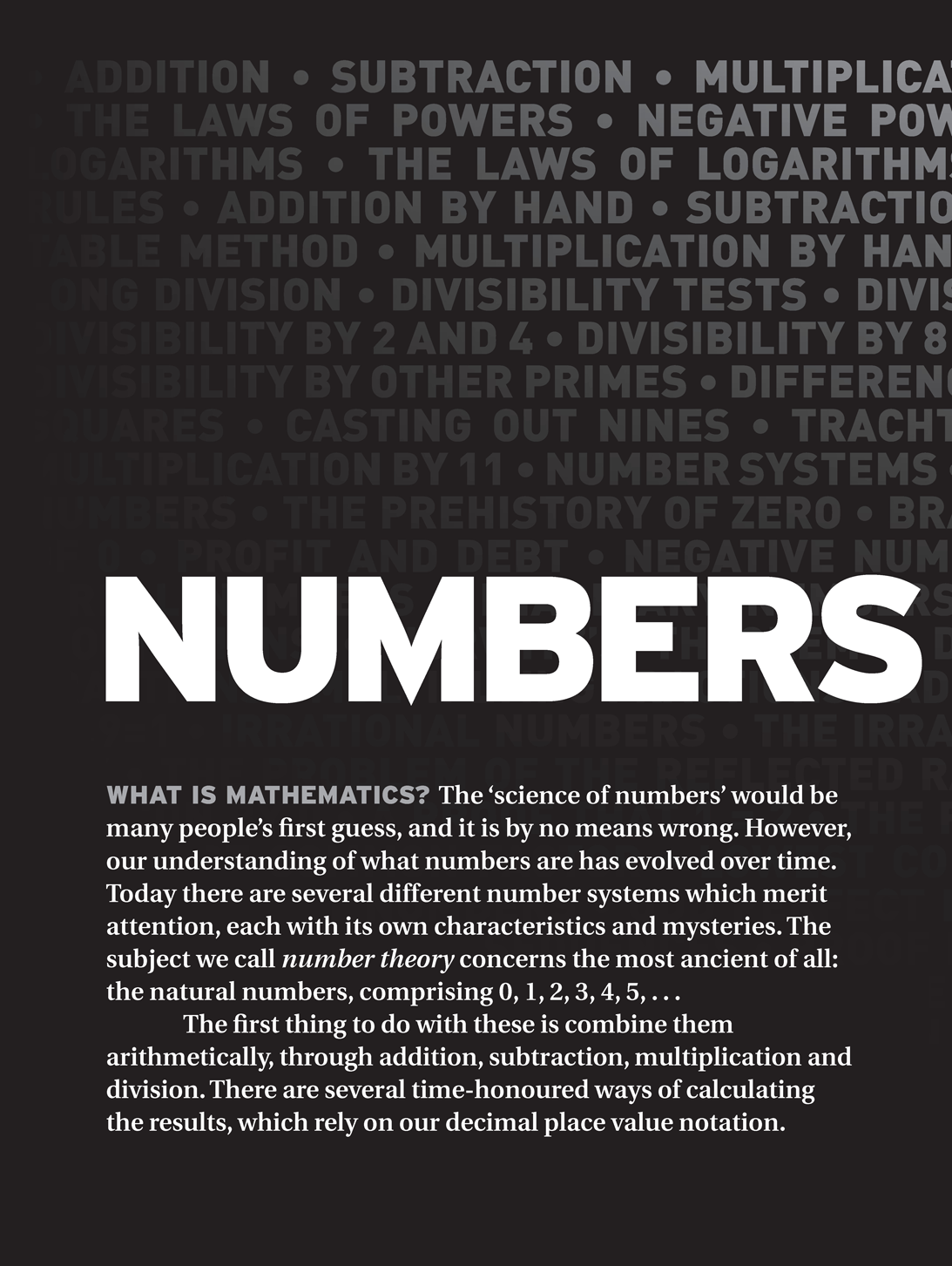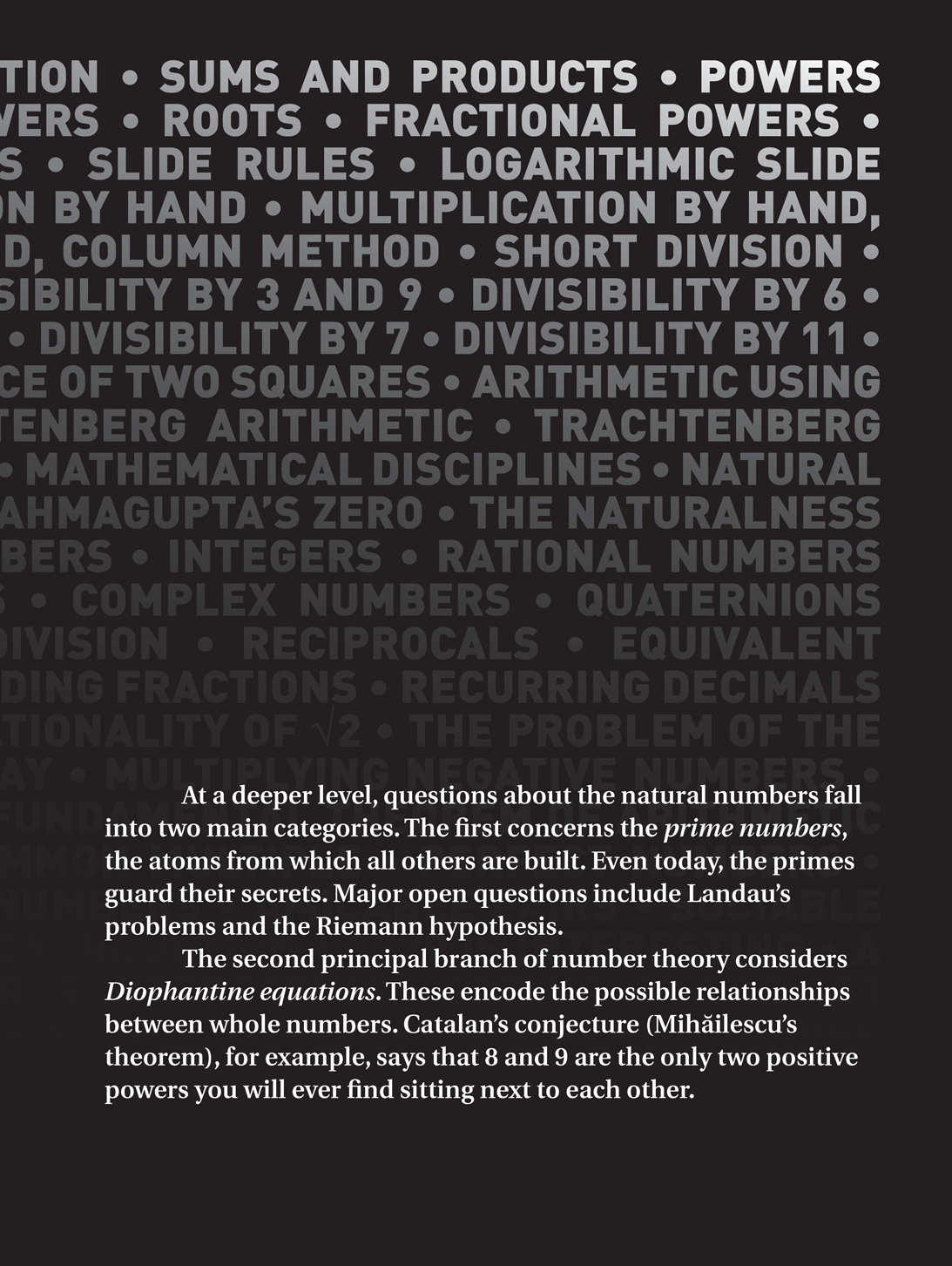Contents
Guide
MATHS
1001
Dr Richard Okura Elwes is a writer, teacher, and researcher in mathematics and a Senior Teaching Fellow at University of Leeds, UK. He is the author of the books How to Build a Brain, The Maths Handbook, Maths in 100 Key Breakthroughs, and Chaotic Fishponds and Mirror Universes (all published by Quercus), and has written for New Scientist and Plus Magazine. His research interests include mathematical logic and random processes.
Titles in the 1001 series include:
SCIENCE MATHS
MATHS
1001
RICHARD ELWES
Quercus
CONTENTS
Ruler and Compass
Constructions
DISCRETE
MATHEMATICS
CONTENTS
PROBABILITY &
STATISTICS
MATHEMATICAL
PHYSICS
GAMES ANDS
RECREATION
INTRODUCTION
THE FIRST MATHEMATICIAN KNOWN BY NAME is Ahmes, an Egyptian scribe who around 1650 bc copied out and studied a list of complex mathematical problems he called the ancient writings. Today, Ahmes text is known as the Rhind papyrus. From this, and older stone tablets, we know that the scholars of ancient Egypt and Babylon had sophisticated numerical notation and a taste for challenging problems in algebra, geometry and number theory.
The study of mathematics, then, is as ancient as civilization; but it also represents the modernity of todays world. In the millennia since Ahmes work, we have seen scientific and technological progress of which he could not have dreamt. Central to this advance has been the march of mathematics, which has contributed the basic language used in all scientific contexts. Probably mathematics most fundamental contribution has been in the sphere of physics. Galileos revolutionary insight in the early 17th century that the universe might yield to a purely mathematical description set the direction towards the world-changing theories of quantum mechanics and relativity.
This reliance on mathematics is not confined to the physical sciences. The social sciences depend on techniques of probability and statistics to validate their theories, as indeed do the worlds of business and government. More recently, with the emergence of information technology, mathematics became entangled in another love-affair, with computer science. This too has had a profound impact on our world.
As its influence has broadened, the subject of mathematics itself has grown at a startling rate. One of historys greatest mathematicians, Henri Poincar, was described by Eric Temple Bell as the last universalist, the final person to have complete mastery of every mathematical discipline that existed during his lifetime. He died in 1912. Today, no-one can claim to have mastered the whole of topology, let alone geometry or logic, and these are just a fraction of the whole of mathematics.
Poincar lived through a turbulent period in the history of mathematics. Old ideas had been blown away, and new seeds planted which flourished during the 20th century. The result is that the mathematical world we know today is rich and complex in ways that even the greatest visionaries of the past could not have imagined. My aim in this book is to give
INTRODUCTION
an overview of this world and how it came to be. I might have tried to sketch a low-resolution map of the entire mathematical landscape, but this would be neither useful nor entertaining. Instead, I have presented 1001 short postcards from interesting landmarks around the mathematical world that nonetheless give a feel for the bigger picture of mathematics.
In the scheme of things, 1001 is a very small number (see the frivolous theorem of arithmetic). My challenge has been to select the real highlights: the truly great theorems, the outstanding open problems and the central ideas. I have also sought to represent the surprises and quirks that make the subject truly fascinating.
This book is organized thematically, on three levels. It is divided into ten chapters, each covering a broad subject, beginning with Numbers. Each chapter is subdivided into sections, which are more narrowly focused on a single topic, such as Prime numbers. Each section comprises a series of individual entries, such as the one on the Riemann hypothesis.
How you should read Mathematics 1001 depends on what you want from it. If you are interested in prime numbers you can read through that section. If you want a quick explanation of the Riemann hypothesis, you can jump straight there; but, because a quick explanation of the Riemann hypothesis is an impossibility, you will then need to rewind a little, to take in the preceding few entries where the necessary prerequisites are laid out. Alternatively you can dip in and out, perhaps finding a new story by following the bold cross-references to different entries in the book.
Who is this book aimed at? The answer is: anyone with a curiosity about mathematics, from the novice to the informed student or enthusiast. Whatever the readers current knowledge, Im sure that there will be material here to enlighten and engage. Some parts of the book undoubtedly cover highly complex subjects. That is the nature of the subject; shying away from it would defeat the purpose. However, the book is structured so that the relevant basic concepts precede the complex ones, giving a foundation for understanding. My job in writing has been to discuss all ideas, from the basic to the most abstract, in as direct and focused a way as possible. I have done my best, and have certainly relished the challenge. Now I can only hope that you will enjoy it too.
Richard Okura Elwes
NUMBERS
WHAT IS MATHEMATICS? The science of numbers would be many peoples first guess, and it is by no means wrong. However, our understanding of what numbers are has evolved over time. Today there are several different number systems which merit attention, each with its own characteristics and mysteries. The subject we call number theory concerns the most ancient of all: the natural numbers, comprising 0, 1, 2, 3, 4, 5,...
The first thing to do with these is combine them arithmetically, through addition, subtraction, multiplication and division. There are several time-honoured ways of calculating the results, which rely on our decimal place value notation.
At a deeper level, questions about the natural numbers fall into two main categories. The first concerns the prime numbers, the atoms from which all others are built. Even today, the primes guard their secrets. Major open questions include Landaus problems and the Riemann hypothesis.

